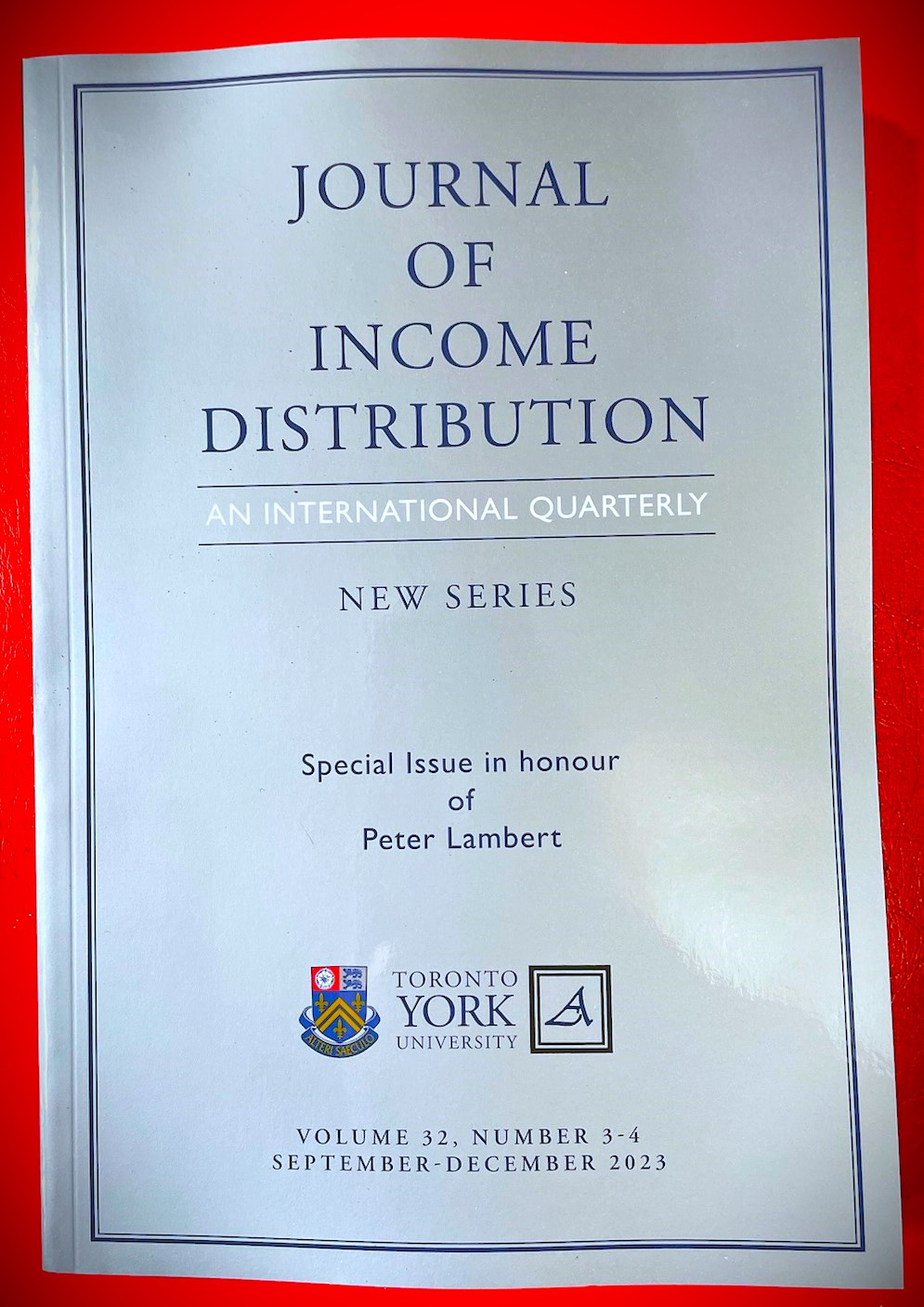Fuzzy Poverty Indices
Keywords:
crisp indices, fuzzy indices, fuzzy membership functions, headcount ratio, income gap ratioAbstract
This article considers how conventional poverty indices may best be extended to a fuzzy environment in which the traditional “crisp” (or dichotomous) poverty assignment is replaced by a membership function m taking values in the unit interval. Suitable analogues are proposed for a variety of standard index properties such as monotonicity, transfer preference, decomposability and scale invariance. It is shown that, in certain circumstances, a unique fuzzy index can be associated with any given conventional index family, and that the fuzzy index may be interpreted as the expected value of the conventional indices. Furthermore, the fuzzy indices not only inherit all the principal index properties of its crisp sub-family, but may also exhibit additional desirable characteristics.
References
Asplund, E., and L. Bungart 1966 A First Course in Integration. Holt, Rinehart and Winston of Canada Ltd.
Barrett, C. R., and P. K. Pattanaik 1989 “Fuzzy sets, preferences and choices: some conceptual issues”, Bulletin of Economic Research 41, 229–253.
—–, and M. Salles 1990 “Measures of inequality and poverty, and fuzzy comparisons”, mimeo.
Basu, K. 1987 “Axioms for a fuzzy measure of inequality”, Mathematical Social Sciences 14, 275–288.
Cerioli, A., and S. Zani 1990 “A fuzzy approach to the measurement of poverty in C. Dagum and M. Zenga (eds.), Income and Wealth Distribution, Inequality and Poverty. Berlin: Springer-Verlag.
Chakravarty, S. R. 1983 “Ethically flexible measures of poverty”, Canadian Journal of Economics 16, 74–85.
Donaldson, D., and J. A. Weymark 1986 “Properties of fixed population poverty indices”, International Economic Review 27, 667–688.
Dubois, D. and H. Prade 1980 Fuzzy sets and systems: theory and applications New York: Academic Press.
Fishburn, P. C., and R. G. Vickson 1978 “Theoretical foundations of stochastic dominance” in G. A. Whitmore and M. C. Findlay (eds.) Stochastic Dominance. Lexington, Mass.: D. C. Heath and Co.
Foster, J. E. 1984 “On economic poverty: a survey of aggregate measures”, Advances in Econometrics 3, 215–251.
—–, J. Greer and E. Thorbecke 1984 “A class of decomposable poverty indices”, Econometrica 52, 761–765.
—–, and A. F. Shorrocks 1991 “Subgroup consistent poverty indices”, Econometrica 59, 687–709.
Kundu, A., and T. E. Smith 1983 “An impossibility theorem on poverty indices”, International Economic Review 24, 423–434.
Sen, A. K. 1976 “Poverty: an ordinal approach to measurement”, Econometrica 44, 219–231.
—– 1979 “Issues in the measurement of poverty”, Scandinavian Journal of Economics 81, 285–307.
Seidl, C. 1988 “Poverty measurement: a survey” in D. Bos, M. Rose and C. Seidl (eds.), Welfare and Efficiency in Public Economics. Berlin: Springer-Verlag.





